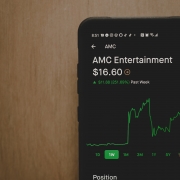Recovery Rebate Stimulus Payment
The American Rescue Plan Act of 2021 is now a done deal. Among the items of greatest interest to most Americans is a third round of stimulus checks—or IRS “recovery rebates”—of up to $1,400 for every “eligible individual.”
That is the quick take but what is the fine print?
How Much Will You Receive?
Each eligible individual in your household should receive $1,400. Eligible individuals include:[1]
- You, as an individual taxpayer
- Your spouse (if you are filing a joint tax return)
- Any dependents you are claiming on your tax return, regardless of their age
For example: A married couple filing jointly and claiming three dependents on their tax return would be eligible for $1,400 x 5 = $7,000. This is the case even if the dependent is, say, an adult child in college, or a parent in assisted living.
The catch? Whether you receive a full, a partial, or no rebate depends on your Adjusted Gross Income (AGI) on your tax return:
| If you are … | You receive a full rebate if your AGI is … | You receive a partial rebate if your AGI is … | You won’t receive a rebate if your AGI is … |
| Single, or married filing separate | Under $75,000 | $75,000–$80,000 | Over $80,000 |
| Head of household | Under $112,500 | $112,500–$120,000 | Over $120,000 |
| Married, filing jointly | Under $150,000 | $150,000–$160,000 | Over $160,000 |
Which AGI are we talking about? Technically, the stimulus payment is a 2021 Recovery Rebate, but like our Great American Pastime (baseball), you actually get up to three “at bats,” or years in which to qualify for a full or partial rebate.
At Bat #1: Your 2019 or 2020 Tax Return, Already Filed
Initially, the IRS will look at the AGI reported on the most recent tax return you’ve already filed, whether that’s your 2019 or 2020 return. If your AGI falls within the “full rebate” parameters above, you can expect to receive your full 2021 Recovery Rebate. Where will the money go? If the IRS has a checking account on file for you, they should be able to issue a direct deposit into that account. Otherwise, they should mail you a check or debit card to your address on file.
Note: Even if you end up reporting higher income in subsequent years, you will get to keep the full amount of any payment you receive from At Bat #1. The IRS will not come after you, asking for you to pay it back.
At Bat #2: Your 2020 Tax Return, To Be Filed What if you’ve not yet filed your 2020 tax return, but your 2019 income was too high to qualify you for a full rebate? Good news: You get another chance once you file your 2020 return. At that time, the IRS will perform an “additional payment determination.” If your 2020 return qualifies you for a higher rebate than your 2019 return did, the IRS will essentially send you the difference, again via direct deposit or mail. You could receive:
- A full or partial payment: If you received nothing based on your 2019 return, but you now qualify for one or the other based on your 2020 income.
- A second partial payment: If you already received a partial payment, but you now qualify for more based on your 2020 income.
- Nothing: If your AGI is still too high to qualify.
Note: To qualify for an additional payment determination, be sure to file your 2020 tax return on a timely basis, even if the filing deadline ends up being extended beyond April 15, 2021. We can provide additional information about specific deadlines as needed.
At Bat #3: Your 2021 Tax Return
What if neither your 2019 tax return nor your 2020 return qualify you for a full rebate? You still have one more chance. If your 2021 income is low enough to qualify, you will be able to file for a credit on your 2021 tax return for any amounts not already received.
Additional Ideas: What’s a Taxpayer To Do?
You may have noticed, the range for receiving a partial payment is very narrow, which means fewer taxpayers will fall into it. Most of us will either qualify for a full rebate … or none at all.
If you do fall into the partial-rebate range, the amount you’ll receive will be calculated based on a straight percentage.
For example: A couple filing jointly with no dependents reports an AGI of $155,000, smack in the middle of the $150,000-$160,000 range. This means half of their rebate will be phased out. Instead of receiving $1,400 x 2 = $2,800, they’ll receive half of that, or $1,400.
Also, the tight, cliff-like gap between receiving a full payment versus nothing at all means a little tax planning could go a long way between now and year-end, especially if your annual income is close to qualifying you for a recovery rebate. If this applies to you, please reach out to us soon to explore any 2020 or 2021 tax-planning opportunities that may help. Even if your income falls well within the “yes” or “no” recovery rebate ranges, please let us know if we can address any additional questions or comments. It is what we are here for!
[1] Nonresident alien individuals, and estates or trusts are explicitly excluded.
Reference Materials:
- H.R. 1319: American Rescue Plan Act of 2021.
- Nerd’s Eye View, “The American Rescue Plan Act of 2021: Tax Credits, Stimulus Checks, and More That Advisors Need To Know!” Jeffrey Levine, March 10, 2021.
- The Wall Street Journal, “Third Stimulus Check: When Are the $1,400 Payments Coming and Who Is Eligible?” Richard, Rubin, March 11, 2021.

Emily Balmages, CFP®, CRTP
Wealth Advisor, Warren Street Wealth Advisors
Investment Advisor Representative, Warren Street Wealth Advisors, LLC., a Registered Investment Advisor
The information presented here represents opinions and is not meant as personal or actionable advice to any individual, corporation, or other entity. Any investments discussed carry unique risks and should be carefully considered and reviewed by you and your financial professional. Nothing in this document is a solicitation to buy or sell any securities, or an attempt to furnish personal investment advice. Warren Street Wealth Advisors may own securities referenced in this document. Due to the static nature of content, securities held may change over time and current trades may be contrary to outdated publications. Form ADV available upon request 714-876-6200.








